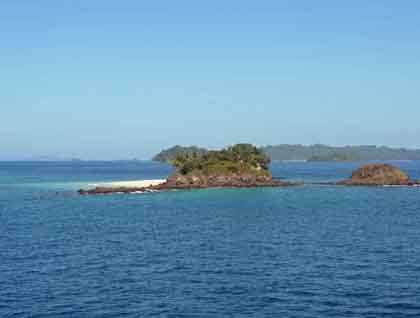After an unforgettable experience on the Pacific coast of Costa Rica, where we enjoyed the wonders of the neotropical rainforest, we repositioned over 120 nautical miles to our first visit within Panamanian boundaries. We started by visiting Coiba Marine National Park, which is considered the most pristine marine national park in Panama, and one of the most important areas of conservation on the Eastern Pacific. Its importance and conservation efforts make it a cornerstone of the Central and South American Marine Corridor. Together with Cocos Island in Costa Rica, Malpelo in Colombia, and Galapagos in Ecuador, this area is extremely vital for the health of our marine ecology in Central America.
Coiba National Park was established in the early 1990’s and because of its worldwide importance it was declared as a World Heritage Site, status that definitively makes all of Panama very proud and willing to help with its conservation.
Coiba’s history is full of glory and tragedy, starting with the arrival of the first Spaniard conquistadors back in 1519, who conquered the island from its native inhabitants. Later in the early 1920´s the government decided to establish a penal colony, which kept most of the Panamanian settlers away from this piece of paradise, and ironically kept the island unspoiled and untamed.
We decided on our visit to enjoy its natural marine treasures visiting Granito de Oro, one of the smallest islands within the park and a location that gathered unique sightings of marine life, including the hawksbill turtle, king angelfish, Moorish idol, and many others. We also enjoyed a relaxing white-sand beach that invited our travelers to try some kayaking, swimming, and snorkeling activities. Certainly the morning was as good as expected and once we finished with our activities we embarked our vessel heading towards a new location, central Panama and the Panama Canal.







